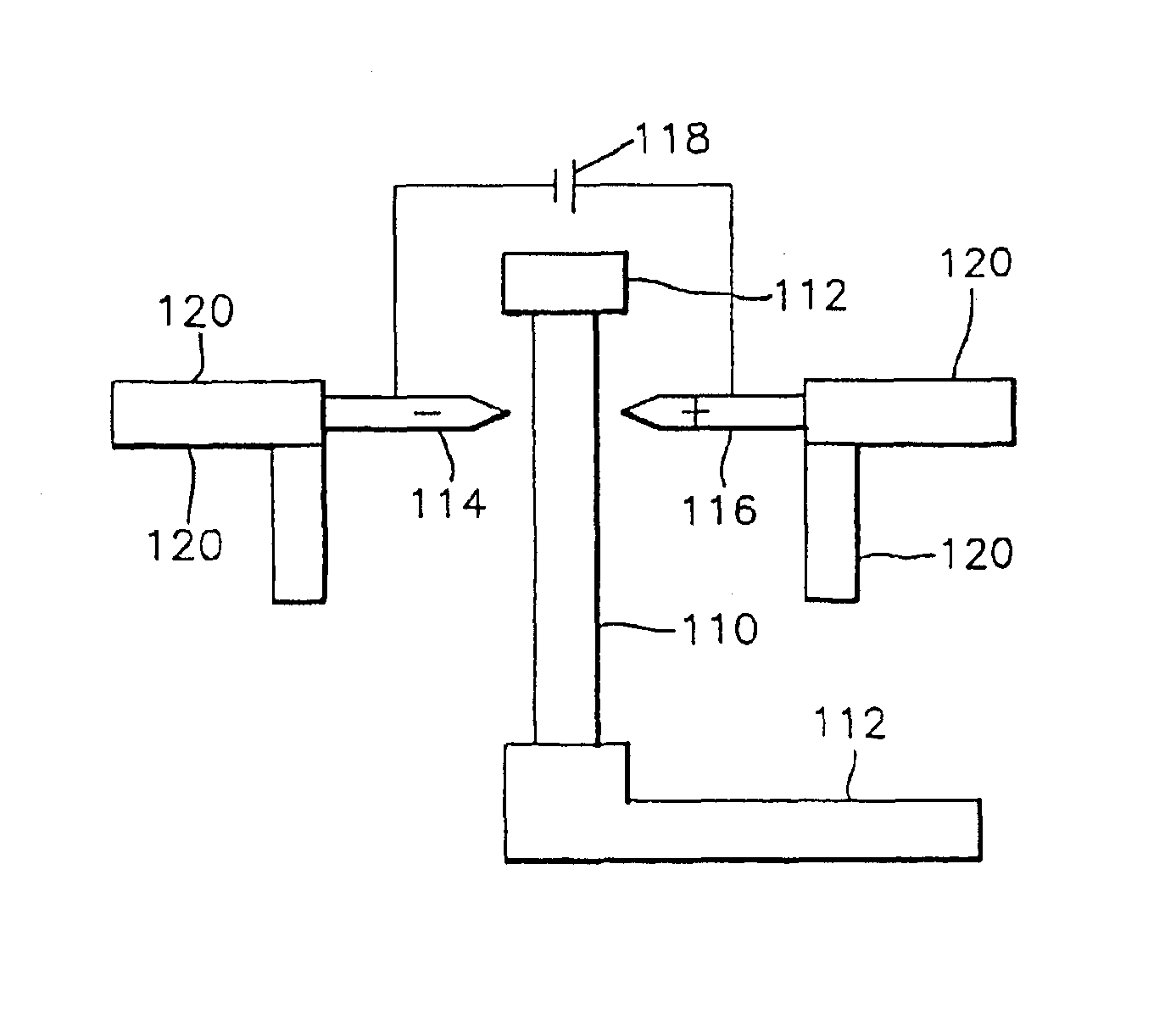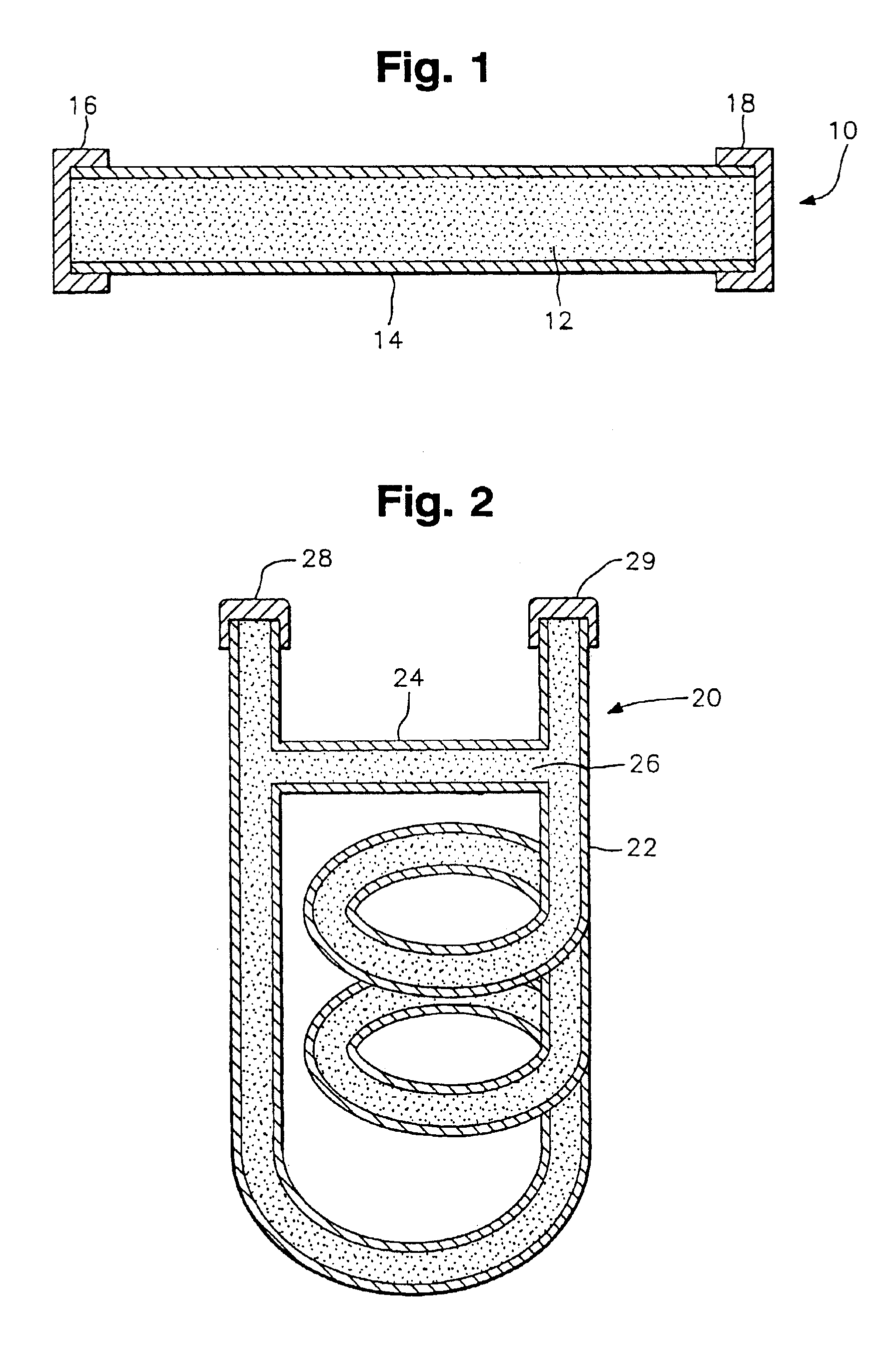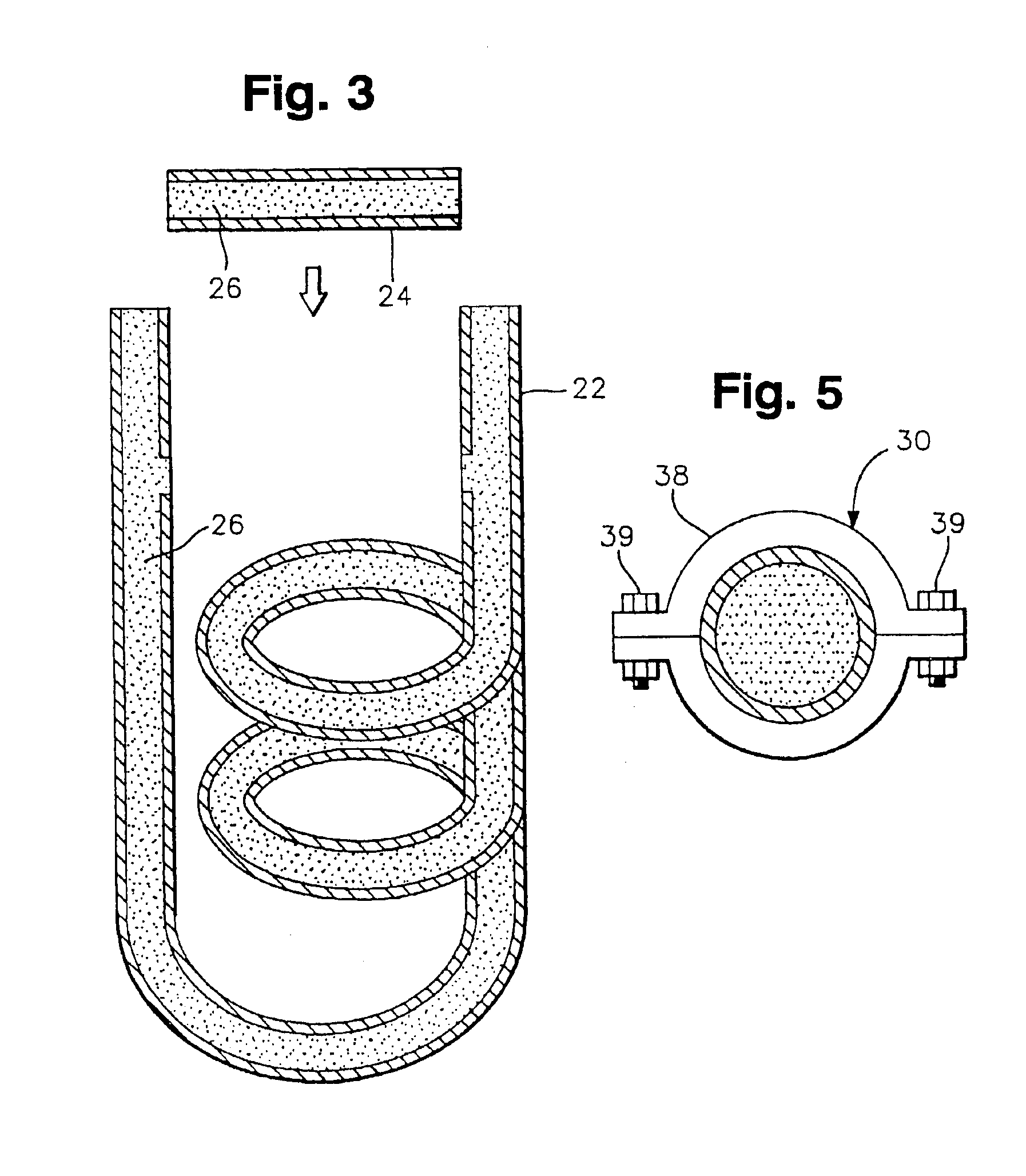High-TC superconducting ceramic oxide products and macroscopic and microscopic methods of making the same
a technology of ceramic oxide and superconducting ceramic oxide, which is applied in the direction of superconductor details, superconductor devices, instruments, etc., can solve the problems of loss of superconductivity, poor flexibility and discontinuity of wires, and prior attempts to make high-tc superconducting ceramic oxide products suffer from one or more disadvantages, and achieve enhanced pinning effect, enhanced pinning effect, and stable chemical substitution of pinning centers
- Summary
- Abstract
- Description
- Claims
- Application Information
AI Technical Summary
Benefits of technology
Problems solved by technology
Method used
Image
Examples
Embodiment Construction
[0039]Referring now to the drawing figures, and in particular FIGS. 1-7, there are shown several embodiments of a completely sealed, high-Tc superconducting ceramic oxide product of the present invention. Each of these embodiments is made by the macroscopic method of the invention. To produce the completely sealed superconducting products of FIGS. 1-7, the following macroscopic method is used.
[0040]First, the compounds or ingredients for making a high-Tc superconducting ceramic oxide composition are mixed together in powder form, by standard powder metallurgical techniques. For example, high purity Y2O3, BaCO3 and CuO powders are mixed together, without water content, to make the preferred high-Tc superconducting composition YBa2Cu3OX. Then, the mixed powder is heated up to 940° C. in an unglazed ceramic crucible in a well ventilated oven for about 12 hours, and then cooled over a period of about 3 hours. The powder mixture is then kept at a temperature of about 450° C. for another ...
PUM
| Property | Measurement | Unit |
|---|---|---|
| Temperature | aaaaa | aaaaa |
| Thickness | aaaaa | aaaaa |
| Angle | aaaaa | aaaaa |
Abstract
Description
Claims
Application Information
 Login to View More
Login to View More - R&D
- Intellectual Property
- Life Sciences
- Materials
- Tech Scout
- Unparalleled Data Quality
- Higher Quality Content
- 60% Fewer Hallucinations
Browse by: Latest US Patents, China's latest patents, Technical Efficacy Thesaurus, Application Domain, Technology Topic, Popular Technical Reports.
© 2025 PatSnap. All rights reserved.Legal|Privacy policy|Modern Slavery Act Transparency Statement|Sitemap|About US| Contact US: help@patsnap.com



